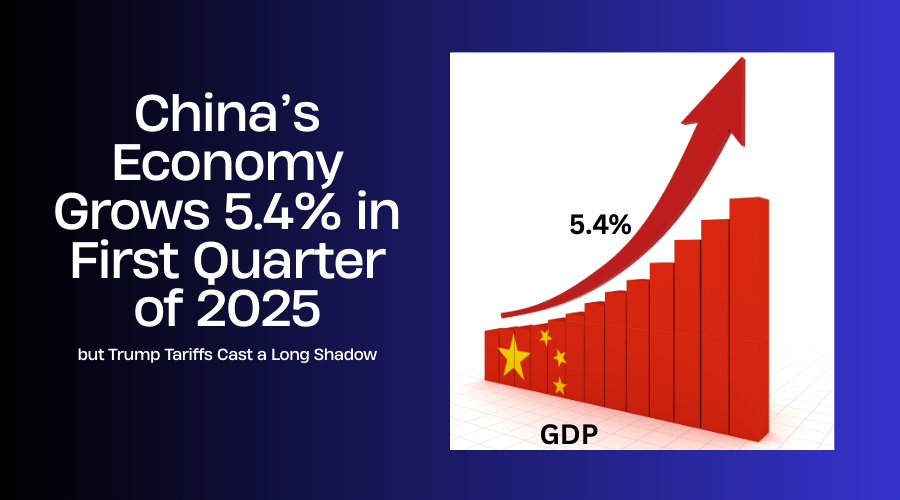Key Takeaways:
- China’s economy grew 5.4% in Q1 2025, exceeding expectations.
- Strong export demand and industrial output supported the growth.
- U.S. tariffs under Trump pose significant risks to future performance.
- Officials warn of external headwinds and domestic challenges ahead.
China’s economy posted stronger-than-expected growth in the first quarter of 2025, with gross domestic product (GDP) rising by 5.4% year-on-year, official data showed on Wednesday. While the figure beat analyst forecasts of 5.1%, the looming impact of steep U.S. tariffs has cast uncertainty over the country’s economic outlook.
The growth, unchanged from the final quarter of 2024, was driven by robust industrial production, resilient retail sales, and a surge in export activity, as businesses rushed to fulfill international orders ahead of expected tariff hikes. In March alone, industrial output jumped by 7.7%, and retail sales climbed 5.9% from a year earlier.
“The national economy had a steady and good start, continuing the upward trend,” said Sheng Laiyun, deputy head of China’s National Bureau of Statistics (NBS). He noted that domestic demand is improving and employment remains stable. On a quarterly basis, GDP rose by 1.2%, further reinforcing the economy’s early momentum.
However, the upbeat data arrives against a backdrop of growing geopolitical tension. U.S. President Donald Trump has ramped up tariffs on Chinese goods, eliminating the de minimis exemption for shipments under $800 and imposing levies exceeding 145% on certain products. Analysts warn that the second quarter may reflect the brunt of these measures.
“China’s economy faces two material drags simultaneously: the ongoing property fallout internally and the unprecedented U.S.-China trade war externally,” analysts at Nomura wrote in a research note.
Despite the strong performance, Chinese officials have acknowledged the mounting challenges. “The external environment is becoming more complex and severe,” Sheng stated, while reiterating China’s opposition to what he described as U.S. “trade bullying.” He added, “We have the confidence and capacity to meet our development targets.”
In response to escalating trade tensions, there is speculation that Beijing could roll out new stimulus efforts to sustain its “around 5%” full-year growth target, especially as export momentum may falter under pressure from U.S. tariffs.
Related blog post: Hong Kong Halts U.S.-Bound Postal Shipments in Response to Trump’s Tariff Hike
As China braces for the full economic effects of the new levies, officials are also working to strengthen ties with regional trade partners. President Xi Jinping’s visit to Malaysia this week is viewed as part of a broader strategy to reinforce economic alliances amid strained U.S.-China relations.
The coming months will likely test the resilience of China’s economy as it navigates intensifying global trade friction and structural domestic issues.

